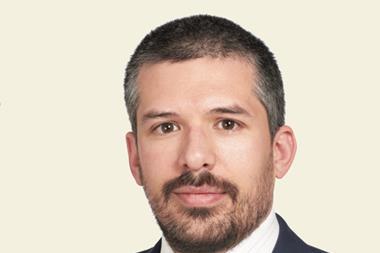It’s no real news that ageing is changing our society in numerous ways – from simple things like product design (making smart phones for older eyes and fingers to use) to more generationally diverse workplaces.
Demographic change affects DB pension funds in particular. In combination with the prolonged period of low interest rates, it has already had a profound effect on their liabilities and investment practices.
Dutch life expectancy at age 65 is now 18.8 years and 21.2 years respectively for men and women, up from 14.0 and 16.4 years in 1980. The picture is nearly identical in the UK – 18.8 years for men and 21.1 for women in 2017-19.
Translated into asset and liability management, providing two decades of solid income is a prodigious task. In a scenario of rising rates, liabilities will decrease but the value of fixed-income portfolios will also decline. In a low-growth and continued low-rate scenario, attractive risk-adjusted yield remains scarce.
What can be expected as pension funds continue to push into private markets and alternative areas of fixed income? Here are five (probable) outcomes:
• Fee budgets will rise with a new balance of alternative asset classes, at least in the short term (a contentious topic covered by my colleague Carlo Svaluto Moreolo in this issue). In previous decades, legions of product sales staff earned handsome commissions from retirement savings pools – both institutional and retail. In an era of low returns, an important focus of regulators and investors has been to change the balance between costs (decreasing) and transparency (increasing).

In listed markets, a move towards passive and near-passive investments in the past decade led to a panic, in some quarters at least, about the future of active management. Yet its demise has been overstated from a cross-asset-class perspective and anecdotal evidence has long suggested that good institutional investors value both passive and active approaches.
In private most markets, be they real estate credit, for instance, or private equity, there is, as yet, no credible alternative to active management. Willis Towers Watson is investigating a passive approach to private equity but with no clear strategy as yet. As things stand, stakeholders should be comfortable with a sensible balance of fees in private markets, which is not to say they should over pay.
• Some investors will overbid: the competitive nature of many illiquid investment strategies (a narrow pipeline of supply) and the trade off between the fixed cost of due diligence and the opportunity cost of an uncompetitive bid, means that foregoing some portion of future income by overbidding can still be an attractive course of action. If this resets the pricing benchmark upwards in a particular niche or asset class, then other investors may have to take it on the chin.
• Maturer portfolios take on a green tinge: equities are where the heavy lifting has been in ESG, particularly given the ability of large investors (often working together) to effect change at board level through their engagement and voting approaches. But many companies are decades away from achieving net-carbon zero. Look at portfolio carbon exposure through an LDI lens, however, and the picture changes. A tilt towards green yield-generating private markets assets on the one hand – think renewables – and increasing issuance of green government bonds on the other means a carbon-neutral target can be closer for mature retirement asset pools.
Pension funds will increasingly be able to use green government bonds in their LDI bucket in combination with a portfolio of illiquid alternatives in the return portion, with many of the underlying assets producing both cashflow and measurable impact against climate or other UN SDG goals.
• The shape of outsourcing is changing and investment organisations built to run cashflow-positive DB portfolios are looking less fit for purpose. This could prompt a rethink of in-house management and, indeed, it might spark a wave of outsourcing or consolidation among pension funds with smaller, less-flexible investment teams more focused on liquid markets. It can be hard even for quite sizeable investors to compete with very large international players like the Canadians.
• A limited rotation back to equities: longer, stable investment horizons together with better and more granular modelling of risk means mature pension funds may wish to take on more equity exposure if there is a shortage of viable yield-generating assets – particularly in the form of quality cashflow compounding equities, some of which (not coincidentally) also score highly on ESG metrics.
Each of these developments would be significant in itself. Taken together they will have profound implications for retirement asset pools.
Liam Kennedy, Editor
liam.kennedy@ipe.com


















No comments yet